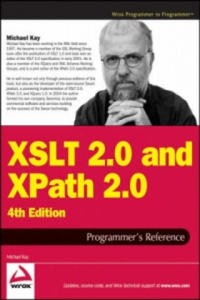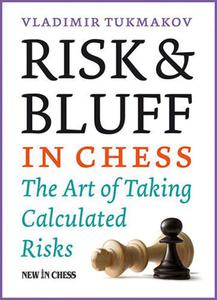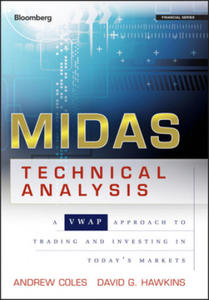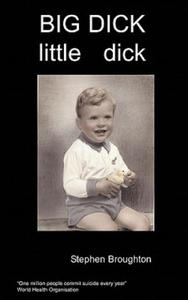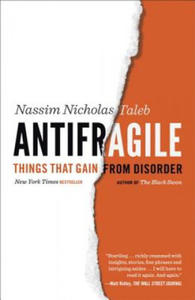krainaksiazek when you write a letter some suggestions as to why when and how it should be done 26621689
- znaleziono 19 produktów w 4 sklepach
When You Write A Letter, Some Suggestions As To Why, When, And How It Should Be Done (Classic Reprint)
Książki Obcojęzyczne>Nieprzypisane
0x001f3cb600000000
Sklep: Gigant.pl
What to Expect When You're Expected Random House
Książki / Literatura obcojęzyczna
This new second edition is filled with the latest, most accurate wombhood information, including comforting answers to hundreds of questions, such as - "My mother just took a sip of white wine. Am I going to end up looking like some Chernobyl baby now?"- "So far Mommy is spending most of her pregnancy in a state of stress, anxiety, and depression. Which one should she focus on?" - "I'm kicking as hard as I can, but Mom says it feels like 'butterflies fluttering.' Am I doing something wrong?"- "Why do my parents blast Mozart at me every night right when I'm trying to sleep?!?"- "To the nearest hundred, how many people should Mommy invite to my birth?"
Sklep: Libristo.pl
Letter from America Penguin
Powieści i opowiadania
When Alistair Cooke retired in March 2004 and then died a few weeks later, he was acclaimed by many as one of the greatest broadcasters of all time. His Letters from America, which began in 1946 and continued uninterrupted every week until early 2004, kept the world in touch with what was happening in Cooke's wry, liberal and humane style. This selection, made largely by Cooke himself and supplemented by his literary executor, gives us the very best of these legendary broadcasts. Over half have never appeared in print before. It is a remarkable portrait of a continent - and a man. Fred Astaire 26 June 1987 Movie stars don't make it. Nor statesmen. Not Prime Ministers, or dictators unless they die in office. Not even a world-famous rock star, unless he's assassinated. But last Monday, none of the three national television networks hesitated about the story that would lead the evening news. On millions of little screens in this country and I don't doubt in many other countries around the world, the first shots were of an imp, a graceful wraith, a firefly in impeccable white tie and tails. And for much longer than the lead story usually runs, for a full five minutes on NBC, we were given a loving retrospective of the dead man, ending with the firm declaration by Nureyev that 'He was not just the best ballroom dancer, or tap dancer, he was simply the greatest, most imaginative, dancer of our time.' And the newsmen were right to remind us of the immortal comment of the Hollywood mogul, who, with the no-nonsense directness of an expert, reported on Fred Astaire's first film test: 'Has enormous ears, can't act, can't sing, dances a little.' That Hollywood mogul, long gone, spent his life ducking round corners, to avoid being identified as the oaf who looked in the sky and never saw the brightest star. However, that expert opinion was, as the lawyers say, controlling at the time and in Astaire's first movies, there was no thought of allowing him to act or sing. But not for long. And thanks to the invention of television, and the need to fill vast stretches of the afternoon and night with old movies, it has been possible for my daughter, for instance, to claim Fred Astaire as her favourite film star from the evidence of all the movies he made fifteen, ten, five, three years before she was born. When I got the news on Monday evening here, and realized with immediate professional satisfaction that the BBC had smartly on hand a musical obituary tribute to him I put together eight years ago, I couldn't help recalling the casual, comic way this and similar radio obituaries came about. I was in London at the end of 1979, and Richard Rodgers - one of the two or three greatest of American songwriters - had just died, I believe on New Year's Eve or the night before. Britons, by then, were getting accustomed, without pain, to making what used to be a two-day Christmas holiday into a ten-day much-needed rest. For all laborious research purposes, the BBC was shut up. And there was no retrospective programme on the life and music of Richard Rodgers in the BBC's archives. Of course, in a gramophone library that looks like an annex to the Pentagon, there were hundreds, perhaps thousands, of recordings of his songs. The SOS went out to a writer, a producer, and - I presume - a man who had the key to the gramophone library. The silent place was unlocked, and the three of them laboured through the day to put together an hour's tribute to Richard Rodgers. It was done. It was competent enough, but rushed to an impossible deadline. This hasty improvisation happened just when my own music producer and I, who had enjoyed working together for six years or so on American popular music, were wondering what we could offer next. We'd done a sketch history of jazz, through individuals. We'd gone through all the popular music of the 1920s, 1930s and 1940s, and were stumped for a new series, at which point I asked if we mightn't go and talk to the head of the channel, network or whatever. We went in, and the genial boss asked me what we had in mind. 'A morgue,' I said. A what? 'Where', I asked, 'is your morgue?' He was not familiar with the word, a newspaper term. 'Well,' I said, 'all newspapers have them.' 'How d'you mean?' 'If, I explained, 'Mrs Thatcher died tonight and you woke up and read a two-sentence obituary, you'd be rightly outraged. But if you saw a two-page obituary, you'd take it for granted. When d'you suppose it was written?' 'That's right,' he said thoughtfully. What I was proposing was a morgue of the Americans eminent in popular music and jazz, so they'd not get caught short again. A splendid idea, the man said; pick your stars. We made a list and were commissioned to return to America and finish all of them. Naturally, we looked at a calendar, and birthdates of Hoagy Carmichael, Earl Hines, Harold Arlen, Ethel Merman, Stephane Grappelli, Ella Fitzgerald. But then, in a spasm of panic, we thought of two giants - if the word can be used about two comparative midgets: Irving Berlin and Fred Astaire. Berlin was then 91. And Fred Astaire was just crowding 80. The boss man, to whom the idea of a morgue had been, only a few minutes before, quaint if not morbid, wondered what we were waiting for. Better get busy, at once, on Berlin and then on Astaire. I remember doing the Astaire obit, then and there, while I was still in London. Meanwhile, we'd simply pray every night that the Lord would keep Irving Berlin breathing till I could get home and get busy. I remember being picked up in a car by a charming young girl to get to the BBC and record my Astaire narration - there wasn't a moment to lose. She asked me, in the car, what the script was that I was clutching. 'It's an obituary', I said, 'of Fred Astaire.' 'Fred Astaire,' she shrieked, 'dead?' and almost swerved into a bus. 'Of course, he's not dead,' I said, 'but he's going to be one day.' She, too, was new to the institution of a morgue. I recalled that when I was a correspondent for a British paper in the United States, and when for example. Dean Acheson was appointed Secretary of State, the first cable I had from my editor said, 'Welcome Acheson obituary soonest.' How ghoulish, she said. I imagine that to two generations at least, it's assumed that Fred Astaire, this slim, pop-eyed newcomer to Hollywood who couldn't act, couldn't sing, danced a little, only made a fool of the mogul through the movies he made, with Ginger Rogers, in the mid- and late 1930s. But long before then, from the mid-1920s on, he was already an incomparable star - as a dancer - to theatre audiences both in New York and in London. Perhaps more in London than anywhere, certainly in the 1920s, with the early Gershwin hits, Funny Face and Lady Be Good, and lastly, in 1933, in Cole Porter's Gay Divorce (which was the title of the theatre show; Hollywood would not then allow so shocking a title and called the movie version, The Gay Divorcee). Of all the thousands of words that have been written this week, and will be written, there is a passage I went back to on Tuesday night which, I think, as well as anything I know, sums up Astaire's overall appeal - the appeal that takes in but transcends one's admiration for his dancing and for his inimitably intimate singing style. This was written in November 1933, by a theatre critic who had so little feel for dancing that he marvelled why London should go on about 'Mr Astaire's doing well enough what the Tiller Girls at Blackpool do superbly'. The critic, the writer, was James Agate, the irascible, dogmatic, opinionated but brilliant journalist, and I believe the best critic of acting we have had this century. He is writing his review of Gay Divorce, after declaring yet again his contempt for musical comedy as an entertainment for idiots, deploring the play's plot and the acting and hoping 'Micawberishly, for something to turn up'. 'Presently,' he wrote, 'Mr Fred Astaire obliged, and there is really no more to be said.' Except
Sklep: Albertus.pl
Under the Duvet Penguin
Powieści i opowiadania
'When people ask me what I do for a crust and I tell them that I'm a novelist, they immediately assume that my life is a non-stop carousel of limos, television appearances, hair-dos, devoted fans, stalkers and all the glitzy paraphernalia of being a public figure. It's time to set the record straight. I write alone, in a darkened bedroom, wearing my PJs, eating bananas, my laptop on a pillow in front of me ...' Her novels are adored by millions around the world
Sklep: Albertus.pl
Consolations of Philosophy Penguin
Nauki humanistyczne
Alain de Botton, best-selling author of How Proust can Change Your Life, has set six of the finest minds in the history of philosophy to work on the problems of everyday life. Here then are Socrates, Epicurus, Seneca, Montaigne, Schopenhauer and Nietzsche on some of the things that bother us all; lack of money, the pain of love, inadequacy, anxiety, the fear of failure and the pressure to conform.
Sklep: Albertus.pl
XSLT 2.0 and XPath 2.0 Programmer's Reference 4e John Wiley & Sons Inc
Książki / Literatura obcojęzyczna
This book is primarily a practical reference book for professional XSLT developers. It assumes no previous knowledge of the language, and many developers have used it as their first introduction to XSLT; however, it is not structured as a tutorial, and there are other books on XSLT that provide a gentler approach for beginners. The book does assume a basic knowledge of XML, HTML, and the architecture of the Web, and it is written for experienced programmers. There's no assumption that you know any particular language such as Java or Visual Basic, just that you recognize the concepts that all programming languages have in common. The book is suitable both for XSLT 1.0 users upgrading to XSLT 2.0, and for newcomers to XSLT. The book is also equally suitable whether you work in the Java or .NET world. As befits a reference book, a key aim is that the coverage should be comprehensive and authoritative. It is designed to give you all the details, not just an overview of the 20 percent of the language that most people use 80 percent of the time.It's designed so that you will keep coming back to the book whenever you encounter new and challenging programming tasks, not as a book that you skim quickly and then leave on the shelf. If you like detail, you will enjoy this book; if not, you probably won't. But as well as giving the detail, this book aims to explain the concepts, in some depth. It's therefore a book for people who not only want to use the language but who also want to understand it at a deep level. The book aims to tell you everything you need to know about the XSLT 2.0 language. It gives equal weight to the things that are new in XSLT 2.0 and the things that were already present in version 1.0. The book is about the language, not about specific products. However, there are appendices about Saxon (the author's own implementation of XSLT 2.0), about the Altova XSLT 2.0 implementation, and about the Java and Microsoft APIs for controlling XSLT transformations, which will no doubt be upgraded to handle XSLT 2.0 as well as 1.0. A third XSLT 2.0 processor, Gestalt, was released shortly before the book went to press, too late to describe it in any detail. But the experience of XSLT 1.0 is that there has been a very high level of interoperability between different XSLT processors, and if you can use one of them, then you can use them all.In the previous edition we split XSLT 2.0 and XPath 2.0 into separate volumes. The idea was that some readers might be interested in XPath alone. However, many bought the XSLT 2.0 book without its XPath companion and were left confused as a result; so this time, the material is back together. The XPath reference information is in self-contained chapters, so it should still be accessible when you use XPath in contexts other than XSLT. The book does not cover XSL Formatting Objects, a big subject in its own right. Nor does it cover XML Schemas in any detail. If you want to use these important technologies in conjunction with XSLT, there are other books that do them justice. This book contains twenty chapters and eight appendixes (the last of which is a glossary) organized into four parts. The following section outlines what you can find in each part, chapter, and appendix. Part I: Foundations: The first part of the book covers essential concepts. You should read these before you start coding.If you ignore this advice, as most people do, then you read them when you get to that trough of despair when you find it impossible to make the language do anything but the most trivial tasks. XSLT is different from other languages, and to make it work for you, you need to understand how it was designed to be used. Chapter 1: XSLT in Context: This chapter explains how XSLT fits into the big picture: how the language came into being and how it sits alongside other technologies. It also has a few simple coding examples to keep you alert. Chapter 2: The XSLT Processing Model: This is about the architecture of an XSLT processor: the inputs, the outputs, and the data model. Understanding the data model is perhaps the most important thing that distinguishes an XSLT expert from an amateur; it may seem like information that you can't use immediately, but it's knowledge that will stop you making a lot of stupid mistakes. Chapter 3: Stylesheet Structure: XSLT development is about writing stylesheets, and this chapter takes a bird's eye view of what stylesheets look like.It explains the key concepts of rule-based programming using templates, and explains how to undertake programming-in-the-large by structuring your application using modules and pipelines. Chapter 4: Stylesheets and Schemas: A key innovation in XSLT 2.0 is that stylesheets can take advantage of knowledge about the structure of your input and output documents, provided in the form of an XML Schema. This chapter provides a quick overview of XML Schema to describe its impact on XSLT development. Not everyone uses schemas, and you can skip this chapter if you fall into that category. Chapter 5: The Type System: XPath 2.0 and XSLT 2.0 offer strong typing as an alternative to the weak typing approach of the 1.0 languages. This means that you can declare the types of your variables, functions, and parameters, and use this information to get early warning of programming errors. This chapter explains the data types available and the mechanisms for creating user-defined types. Part II: XSLT and XPath Reference: This section of the book contains reference material, organized in the hope that you can easily find what you need when you need it.It's not designed for sequential reading, though you might well want to leaf through the pages to discover what's there. Chapter 6: XSLT Elements: This monster chapter lists all the XSLT elements you can use in a stylesheet, in alphabetical order, giving detailed rules for the syntax and semantics of each element, advice on usage, and examples. This is probably the part of the book you will use most frequently as you become an expert XSLT user. It's a "no stone unturned" approach, based on the belief that as a professional developer you need to know what happens when the going gets tough, not just when the wind is in your direction. Chapter 7: XPath Fundamentals: This chapter explains the basics of XPath: the low-level constructs such as literals, variables, and function calls. It also explains the context rules, which describe how the evaluation of XPath expressions depends on the XSLT processing context in which they appear. Chapter 8: XPath: Operators on Items: XPath offers the usual range of operators for performing arithmetic, boolean comparison, and the like.However, these don't always behave exactly as you would expect, so it's worth reading this chapter to see what's available and how it differs from the last language that you used. Chapter 9: XPath: Path Expressions: Path expressions are what make XPath special; they enable you to navigate around the structure of an XML document. This chapter explains the syntax of path expressions, the 13 axes that you can use to locate the nodes that you need, and associated operators such as union, intersection, and difference. Chapter 10: XPath: Sequence Expressions: Unlike XPath 1.0, in version 2.0 all values are sequences (singletons are just a special case). Some of the most important operators in XPath 2.0 are those that manipulate sequences, notably the "for" expression, which translates one sequence into another by applying a mapping. Chapter 11: XPath: Type Expressions: The type system was explained in Chapter 5; this chapter explains the operations that you can use to take advantage of types. This includes the "cast" operation which is used to convert values from one type to another.A big part of this chapter is devoted to the detailed rules for how these conversions are done.Chapter 12: XSLT Patterns: This chapter returns from XPath to a subject that's specific to XSLT. Patterns are used to define template rules, the essence of XSLT's rule-based programming approach. The reason for explaining them now is that the syntax and semantics of patterns depends strongly on the corresponding rules for XPath expressions. Chapter 13: The Function Library: XPath 2.0 includes a library of functions that can be called from any XPath expression; XSLT 2.0 extends this with some additional functions that are available only when XPath is used within XSLT. The library has grown immensely since XPath 1.0. This chapter provides a single alphabetical reference for all these functions. Chapter 14: Regular Expressions: Processing of text is an area where XSLT 2.0 and XPath 2.0 are much more powerful than version 1.0, and this is largely through the use of constructs that exploit regular expressions. If you're familiar with regexes from languages such as Perl, this chapter tells you how XPath regular expressions differ. If you're new to the subject, it explains it from first principles.Chapter 15: Serialization: Serialization in XSLT means the ability to generate a textual XML document from the tree structure that's manipulated by a stylesheet. This isn't part of XSLT processing proper, so (following W3C's lead) it's separated it into its own chapter. You can control serialization from the stylesheet using an declaration, but many products also allow you to control it directly via an API. Part III: Exploitation: The final section of the book is advice and guidance on how to take advantage of XSLT to write real applications. It's intended to make you not just a competent XSLT coder, but a competent designer too. The best way of learning is by studying the work of others, so the emphasis here is on practical case studies. Chapter 16: Extensibility: This chapter describes the "hooks" provided in the XSLT specification to allow vendors and users to plug in extra functionality. The way this works will vary from one implementation to another, so we can't cover all possibilities, but one important aspect that the chapter does cover is how to use such extensions and still keep your code portable.Chapter 17: Stylesheet Design Patterns: This chapter explores a number of design and coding patterns for XSLT programming, starting with the simplest "fill-in-the-blanks" stylesheet, and extending to the full use of recursive programming in the functional programming style, which is needed to tackle problems of any computational complexity. This provides an opportunity to explain the thinking behind functional programming and the change in mindset needed to take full advantage of this style of development. Chapter 18: Case Study: XMLSpec: XSLT is often used for rendering documents, so where better to look for a case study than the stylesheets used by the W3C to render the XML and XSLT specifications, and others in the same family, for display on the web? The resulting stylesheets are typical of those you will find in any publishing organization that uses XML to develop a series of documents with a compatible look-and-feel. Chapter 19: Case Study: A Family Tree: Displaying a family tree is another typical XSLT application.This example with semi-structured data-a mixture of fairly complex data and narrative text-that can be presented in many different ways for different audiences. It also shows how to tackle another typical XSLT problem, conversion of the data into XML from a legacy text-based format. As it happens, this uses nearly all the important new XSLT 2.0 features in one short stylesheet. But another aim of this chapter is to show a collection of stylesheets doing different jobs as part of a complete application. Chapter 20: Case Study: Knight's Tour: Finding a route around a chessboard where a knight visits every square without ever retracing its steps might sound a fairly esoteric application for XSLT, but it's a good way of showing how even the most complex of algorithms are within the capabilities of the language. You may not need to tackle this particular problem, but if you want to construct an SVG diagram showing progress against your project plan, then the problems won't be that dissimilar. Part IV: Appendices: A ppendix A: XPath 2.0 Syntax Summary: Collects the XPath grammar rules and operator precedences into one place for ease of reference.Appendix B: Error Codes: A list of all the error codes defined in the XSLT and XPath language specifications, with brief explanations to help you understand what's gone wrong. Appendix C: Backward Compatibility: The list of things you need to look out for when converting applications from XSLT 1.0. Appendix D: Microsoft XSLT Processors: Although the two Microsoft XSLT processors don't yet support XSLT 2.0, we thought many readers would find it useful to have a quick summary here of the main objects and methods used in their APIs. Appendix E: JAXP: the Java API for XML Processing: JAXP is an interface rather than a product. Again, it doesn't have explicit support yet for XSLT 2.0, but Java programmers will often be using it in XSLT 2.0 projects, so the book includes an overview of the classes and methods available. Appendix F: Saxon: At the time of writing Saxon (developed by the author of this book) provides the most comprehensive implementation of XSLT 2.0 and XPath 2.0, so its interfaces and extensions are covered in some detail. Appendix G: Altova: Altova, the developers of XML Spy, have an XSLT 2.0 processor that can be used either as part of the development environment or as a freestanding component.This appendix gives details of its interfaces. Appendix H: Glossary Note: CD-ROM/DVD and other supplementary materials are not included as part of eBook file.
Sklep: Libristo.pl
Risk Bluff in Chess: The Art of Taking Calculated Risks
Szachy > Książki New In Chess
Shortlisted for the English Chess Federation Book of the Year Award 2016! You cannot win in chess without taking risks. Winning requires courage and psychology. No matter how deep you calculate, there always comes a point where you have to deal with uncertainties and take a decision.What is carefully calculated risk, and what is bluff? And why were famous players like Lasker and Tal so successful with both? They realized that chess is not a science. Emotions also play a role behind the board. If you can guess what your opponent is feeling and thinking, you are ahead of him. When your main aim is to derail your opponent#8217;s calculation by weaving a web of deception, you engage in the highest form of risk: bluff. Renowned chess coach Vladimir Tukmakov has played against, and worked with, quite a few chess greats. Many of them told him frankly about their thoughts and feelings during crucial games. These stories became the foundation of a collection of more than 100 practical ways that masters and grandmasters have used to push beyond the limits of calculation and take a deliberate risk. It works
Sklep: Imperiumzabawek.pl
Shadow of the Sun Penguin
Literatura faktu
'Only with the greatest of simplifications, for the sake of convenience, can we say Africa. In reality, except as a geographical term, Africa doesn't exist'. Ryszard Kapuscinski has been writing about the people of Africa throughout his career. In a study that avoids the official routes, palaces and big politics, he sets out to create an account of post-colonial Africa seen at once as a whole and as a location that wholly defies generalised explanations. It is both a sustained meditation on the mosaic of peoples and practises we call 'Africa', and an impassioned attempt to come to terms with humanity itself as it struggles to escape from foreign domination, from the intoxications of freedom, from war and from politics as theft. The Beginning: Collision, Ghana 1958 More than anything, one is struck by the light. Light everywhere. Brightness everywhere. Everywhere, the sun. Just yesterday, an autumnal London was drenched in rain. The airplane drenched in rain. A cold, wind, darkness. But here, from the morning
Sklep: Albertus.pl
MIDAS Technical Analysis - A VWAP Approach to Trading and Investing in Today's Markets Bloomberg Press
Książki / Literatura obcojęzyczna
"If you are already familiar with MIDAS and interested in rediscovering the powerful trading method developed by the late Paul Levine, then this will become your book of reference. The authors walk you through the wonderful MIDAS world and explain its variations with copious charts and examples. If you are new to the MIDAS method, I recommend first reading the introductory chapters, then jumping to the very practical, money-making Chapter 8, then applying the principles yourself (computer code is provided in the appendices). Armed with 'hands-on' knowledge, you will then access the wealth of information that this book provides in helping you correctly read the markets."-- Pascal Willain, independent trader and inventor of volume-based indicators, author of Value in Time"As the first person to ever write about the Commitments of Traders Report way back in 1973, I have seen the data abused and usually greatly misunderstood. Most people writing on the subject just don't understand it and you will be misled. Chapter 12 in this book sets the record straight. I am delighted to give a 100% endorsement, the truth of the COT report is here, simply stated and easy to understand. Don't put this book down. Take it to the checkout and buy it."-- Larry Williams, private trader, author"Coles and Hawkins have masterfully combined the 'art and science of Technical Analysis' into a well-illustrated and comprehensive tome encompassing the MIDAS method. They have captured the essence of Paul Levine's MIDAS Technical Analysis method and then further expanded it into a new dimension. This book will give any trader the unconventional alternative edge they need to take advantage of the stock market and exploit profits."--StockShare Publishing LLC"The authors pick up where Levine left off, boldly and competently tackling both the theoretical aspects of Levine's MIDAS method, as well as providing concrete practical trading applications. There were some delightful diversions as well, including a superb overview of how to mechanically apply the statistics in the CFTC Commitments of Traders report. It is a privilege to be sourced on some of the pages, as this book has earned its reference status."-- Bob English, Austrian Economist, Market Technician, and Trader"The MIDAS curves can be used in any markets over any timeframe. They are flexible, robust, and powerful. Andrew Coles' and David Hawkins' work on the MIDAS curves is pure gold."-- Jayanthi Gopalakrishnan, Editor,Technical Analysis of STOCKS & COMMODITIES magazine"In this extremely well-developed book, Hawkins and Coles have drawn together a number of ideas, their own and existing methods, in order to construct a concise and disciplined method of analysis and trading. I am particularly delighted to see the recognition of volume as a powerful and often neglected tool. This integration of methods should serve as a profitable tool for those who are willing to do the work to understand why markets move. A well-thought-out technical treatise that belongs in the library of any inquiring technician."-- Richard W. Arms, author, advisor to institutions, and developer of many tools such as The Arms Index and Equivolume charting"I started using MIDAS from the time Paul Levine began publishing his articles in instalments. In the intervening years, I have made MIDAS my own. And I did think it was unlikely that Coles' and Hawkins' book would bring fresh insights. Boy was I wrong! This is an amazing book. Most books tend to be practical to the exclusion of the theory - theory that is so necessary if we are to adjust a tool when it 'stops working;' or tend to be so theoretical as to be impractical. MIDAS Technical Analysis straddles both worlds with ease. As a result, the book is both a reference work and a practical 'to do' volume. What I like most about Coles and Hawkins is they have taken Levine's original idea and conquered new realms with it: they have incorporated MIDAS with other technical tools so that the work should appeal to traders of many and varied disciplines. In my view, this is a must-have book and it shall certainly occupy a space in my shelves."-- Ray Barros, CEO, BarroMetrics Investments Inc
Sklep: Libristo.pl
Sorrows of Young Werther Penguin
Powieści i opowiadania
You only find true love once. When Werther dances with the beautiful Lotte, it seems as though he is in paradise. It is a joy, however, that can only ever be short-lived. Engaged to another man, she tolerates Werther's adoration and encourages his friendship. She can never return his love. Broken-hearted, he leaves her home in the country, trying to escape his own desire. But when he receives a letter telling him that she is finally married, his passion soon turns to destructive obsession. And as his life falls apart, Werther is haunted by one certainty: He has lost his reason for living. This book is a Penguin Red Classic. To see other Penguin Reds, visit the minisite by clicking here. 4th May 1771 How happy I am to be away! My dear friend, what a thing is the heart of Man! To leave you, whom I love so, from whom I was inseparable, and to be happy! I know that you will forgive me. Were not my other attachments hand-picked by Fate to beset a heart such as mine with fears? Poor Leonore! And yet I was innocent. Was it my fault that, while I was taking pleasure and amusement in the wilful charms of her sister, a passion was growing in that poor heart? And yet
Sklep: Albertus.pl
BIG DICK Little Dick Chipmunkapublishing
Książki / Literatura obcojęzyczna
By Stephen BroughtonISBN: 9781847470799Published: 2007Pages: 274Key Themes: humour, suicidal thoughts, abuseDescriptionone man's journey of discovery finding mental ill health as a gift pointing the way understanding dreams and suicidal thoughts meeting the man he should have been little dick surviving an upbringing by a narcisstic mother and a disinterested father, Big Dick. About the AuthorAuthor Stephen has been a trustee of his local MIND group for nearly 20 years and has had suicide as his Plan B for as long as he can remember. He presents 'Thought for the Day' on BBC local radio, sings in a choir and runs marathons very slowly. Stephen is a Ssolicitor, often described by clients as 'not like a real solicitor' which he takes as a great compliment. Most of his friends seem to be mad as well. Book ExtractWe all dream and we probably dream every night. But have you wondered why we only remember some of the dreams and the others are consigned to some cerebral recycle bin? And why we sometimes have the same dream over and over again. I have had, for so long as I have known, a dream where I suddenly discover that I have a house. A tiny derelict house with an over grown garden. Hidden away with no proper path to it. And when I look at the house I see that there's so much work to be done to make it into a place to live that I know its beyond me and that makes me very sad. And there's another dream where I've killed someone a long time ago and nobody but me knows and I'm afraid that someone will some day find out the terrible thing that I have done. And I wake up believing the dream is true not knowing how I can live with myself having done the terrible thing that I have done. So this book is about how I found out about the person I might have killed and how I first found and then set about rebuilding the house that was nothing but an empty shell with a gaping hole in the roof. And have you ever wondered why we have the memories of our childhood that we have? Sometimes trivial every day memories. Like a video running in our mind which never got erased by the other trivial every day memories that we record each day. I have always remembered as if it was yesterday, the day when a white van drew up outside our house and a man in a white coat got out. Our dog was a corgi we called Lightie. The man came into our living room. Lightie was behind the sofa and he picked her up in his arms and took her away. And I never knew why I remembered that so well. Many years later when I had gone past the age they call middle age I told my mother about that memory. She was amazed at what I said because she said I could only have been about 12 months at the time. I had just started to walk and the dog was getting old and no longer as reliable as it needed to be with a toddler around.
Sklep: Libristo.pl
Antifragile Random House
Książki / Literatura obcojęzyczna
Antifragile is a standalone book in Nassim Nicholas Taleb
Sklep: Libristo.pl
Antifragile Penguin Books
Książki / Literatura obcojęzyczna
"The hottest thinker in the world". (Bryan Appleyard, "Sunday Times").In "The Black Swan", Taleb showed us that highly improbable and unpredictable events underlie almost everything about our world. Here Taleb stands uncertainty on its head, making it desirable, even necessary. The antifragile is beyond the resilient or robust. The resilient resists shocks and stays the same; the antifragile gets better and better. Just as human bones get stronger when subjected to stress and tension, many things in life benefit from stress, disorder, volatility, and turmoil. What Taleb has identified and calls antifragile are things that not only gain from chaos but need it in order to survive and flourish. What's more, the antifragile is immune to prediction errors and protected from adverse events. Why is the city-state better than the nation-state, why is debt bad for you, and why is what we call "efficient" is not efficient at all? Why should you write your resignation letter before starting on the job? How did the sinking of the Titanic save lives?"Antifragile" is a blueprint for living in a Black Swan world. Erudite, witty, and iconoclastic, Taleb's message is revolutionary: the antifragile, and only the antifragile, will make it. Nassim Nicholas Taleb has devoted his life to problems of uncertainty, probability, and knowledge and has led three careers around this focus, as a businessman-trader, a philosophical essayist, and an academic researcher. Although he now spends most of his time working in intense seclusion in his study, in the manner of independent scholars, he is currently Distinguished Professor of Risk Engineering at New York University's Polytechnic Institute. His main subject matter is "decision making under opacity," that is, a map and a protocol on how we should live in a world we don't understand.His books "Fooled by Randomness" and "The Black Swan" have been published in thirty-three languages. Taleb believes that prizes, honorary degrees, awards, and ceremonialism debase knowledge by turning it into a spectator sport.
Sklep: Libristo.pl
szukaj w Kangoo krainaksiazek when you write a letter some suggestions as to why when and how it should be done 26621689
Sklepy zlokalizowane w miastach: Warszawa, Kraków, Łódź, Wrocław, Poznań, Gdańsk, Szczecin, Bydgoszcz, Lublin, Katowice
Szukaj w sklepach lub całym serwisie
1. Sklepy z krainaksiazek pl when you write a letter some suggestions as to why when and how it should be done 26621689
2. Szukaj na wszystkich stronach serwisu
t1=0.095, t2=0, t3=0, t4=0.027, t=0.095








